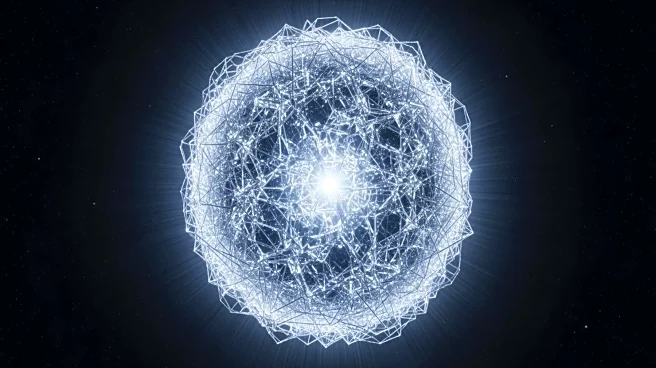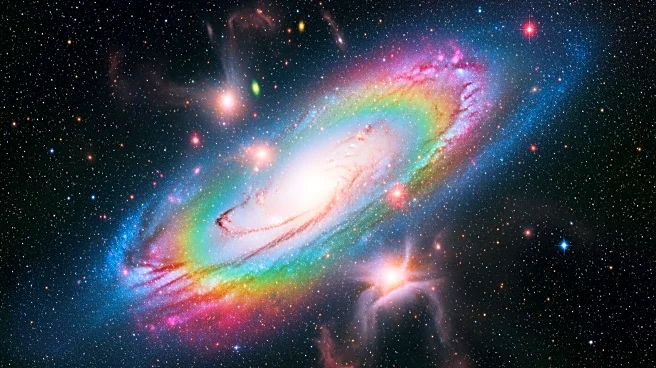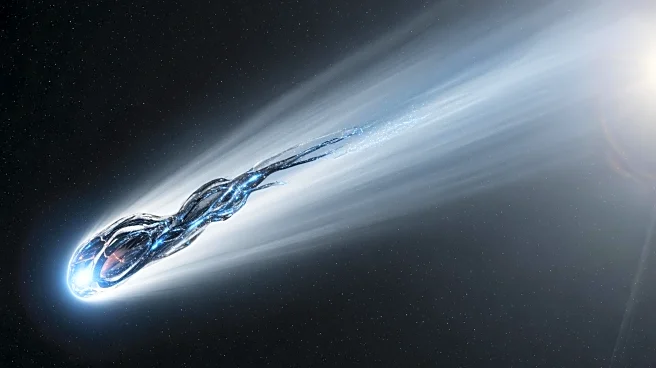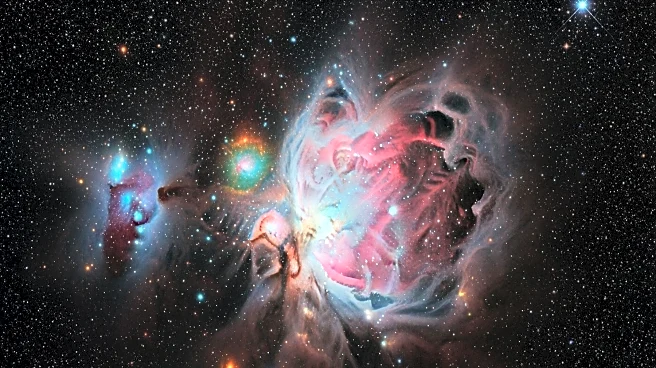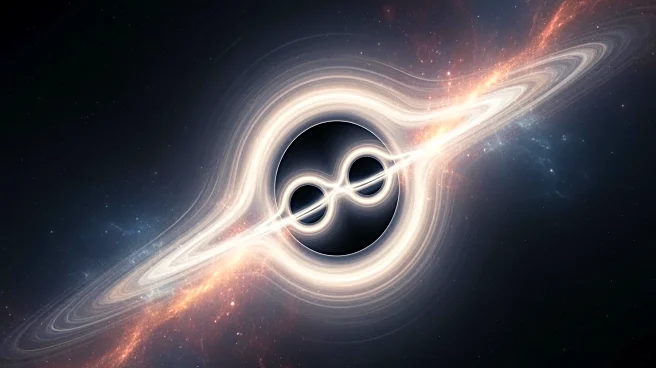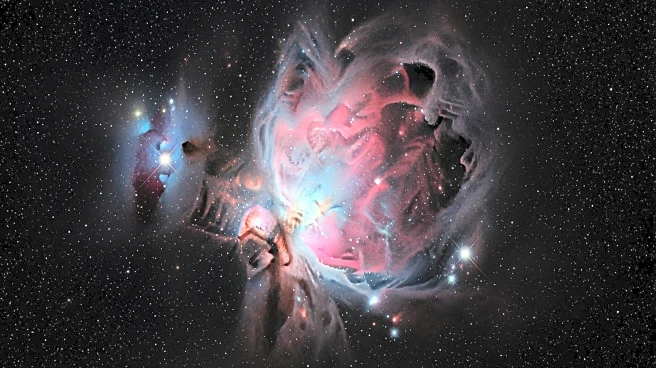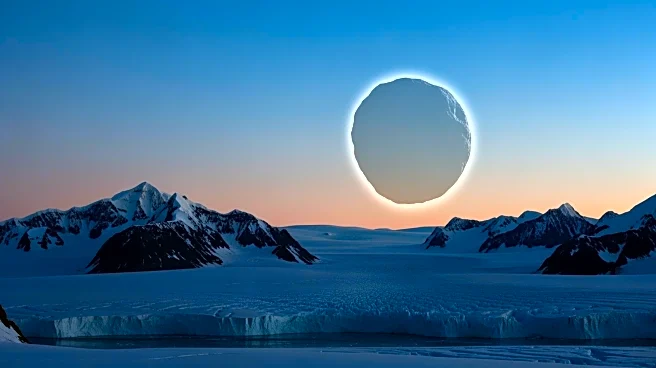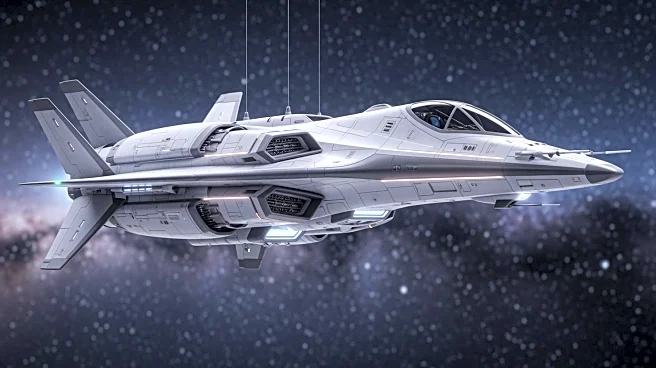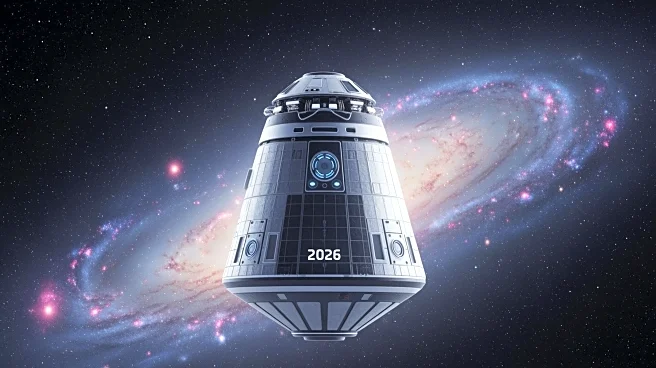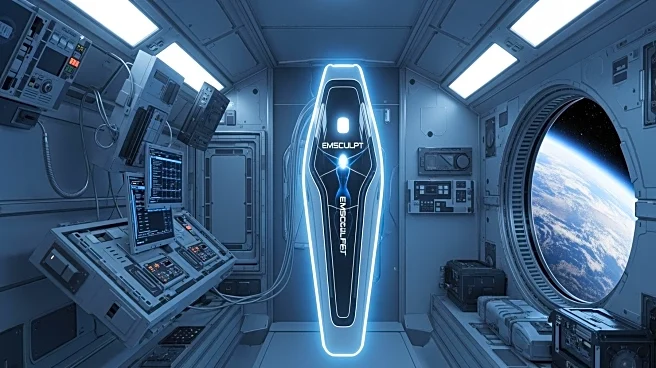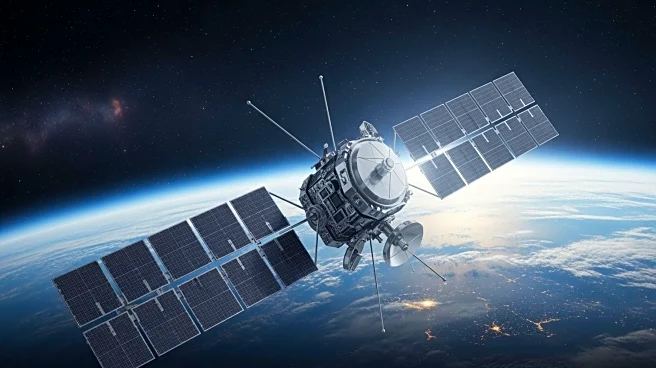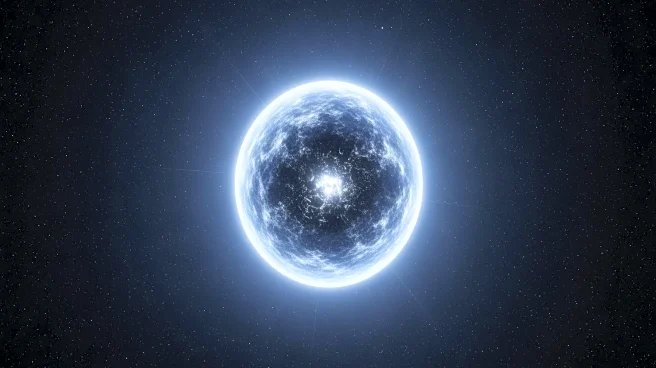What's Happening?
Researchers have developed a new theoretical model to better understand the compactness of neutron stars, which are remnants of massive stars that have undergone supernova explosions. Neutron stars are incredibly dense, packing up to three times the mass of the sun
into a small volume. The exact radius of these stars has been difficult to measure due to their extreme conditions and distance from Earth. The study, conducted by Luciano Rezzolla and Christian Ecker from the University of Frankfurt, explores the equation of state, which describes the density and pressure within a neutron star. This research aims to set an upper limit on the compactness of neutron stars, suggesting that the ratio between a neutron star's mass and its radius is always smaller than 1/3.
Why It's Important?
Understanding the compactness of neutron stars is crucial for advancing knowledge in nuclear physics and general relativity. Neutron stars provide a unique environment to test theories such as quantum chromodynamics (QCD), which describes how the strong force binds particles like quarks. The findings could lead to significant insights into the behavior of matter under extreme conditions, potentially impacting theoretical physics and astrophysics. Accurate measurements of neutron star radii could validate or challenge existing theories, offering clues about the fundamental forces that govern the universe. This research could also enhance the interpretation of gravitational wave events, which involve neutron star mergers.
What's Next?
Future observations and experiments, such as the NICER (Neutron star Interior Composition Explorer) on the International Space Station, may provide more precise measurements of neutron star radii. Additionally, gravitational wave events involving neutron star mergers could offer further data to test the new model. Researchers are optimistic that these advancements will lead to tighter constraints on neutron star properties, potentially revealing new aspects of quantum chromodynamics and the strong force.
Beyond the Headlines
The study's implications extend beyond astrophysics, potentially influencing the understanding of fundamental physics principles. If deviations from the predicted compactness ratio are observed, it could indicate flaws in current QCD assumptions, prompting a reevaluation of the theory. This research highlights the interconnectedness of astrophysical phenomena and particle physics, underscoring the importance of interdisciplinary approaches in scientific discovery.
